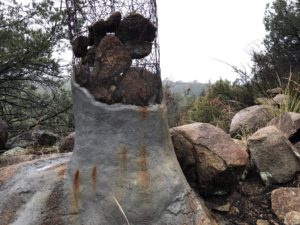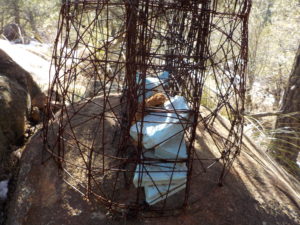Insulating Aircrete Fill
As a final stage for the Flex Shell Core, a light, insulating cellular concrete is pumped in, or gravel, rubble and recycled/landfill diverted material is placed inside the roof, columns, and walls, around the light-steel truss framing, between the structural-sandwich surface shells, for insulation and thermal mass. This fill has no structural requirements and need only be able to flow and fill or be hand-packed around the wire truss framing enough to avoid large cavities.
Cellular concrete (aircrete), enhances the structural performance the most by adding heavy impact absorbing properties, and it is the least expensive in terms of labor cost because one person can mix and pump in the material in a short time. It can be pumped in through a small hole after the building is in use; however, many materials are suitable for internal fill or the walls can be left hollow with only a slight structural disadvantage. Fills can be blended with cellular concrete and other fill combos to fill all the voids around the loosely packed material and provide impact absorption. The most suitable materials to be used by themselves, without cellular concrete encapsulation, because they are fire-proof on their own, are: whole-bottle recycled glass (a fair percent of broken glass is acceptable, it is just safer and easier to transport and place when bottles are mostly unbroken), pumice gravel, scoria gravel, regular gravel, stones, sand, rubble, earth, or any combination. Things like plastic bottles, Styrofoam and shredded tires are suitable as long as care is taken to place the material with enough sand, gravel or cellular concrete to so it is self-extinguishing, in case part of it becomes exposed and ignites.

